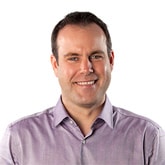Goodbye media relations and hello influencer relations! This is just one way that today’s PR agency (or should that be digital agency?) is evolving to meet modern client and consumer demands. We discuss the PR agency of today, how it is changing and what it may look like in the future.
Less media relations, more influencer marketing
 Errol Jayawardene, creative director at agency Red Lorry Yellow Lorry, says that 10 years ago PR agency life focused on media relations, but now, whilst the media is still an important channel, the days of PROs just working with a handful of faithful media contacts are long gone. “Influencers are everywhere, shifting brand perception and buying decisions. In our sector, B2B, there’s a lot more people involved in the purchase cycle. Buyers will do their own research first and can be 90% of the way through the buying process before they even speak to a client.”
Errol Jayawardene, creative director at agency Red Lorry Yellow Lorry, says that 10 years ago PR agency life focused on media relations, but now, whilst the media is still an important channel, the days of PROs just working with a handful of faithful media contacts are long gone. “Influencers are everywhere, shifting brand perception and buying decisions. In our sector, B2B, there’s a lot more people involved in the purchase cycle. Buyers will do their own research first and can be 90% of the way through the buying process before they even speak to a client.”
Integrated agencies lead
Jayawardene adds that PR agencies also need to be able to connect a brand’s look, feel and story with multiple target audiences and show real ROI. “It means agencies have to be much smarter and offer an integrated approach which, yes, includes media relations, but also other areas such as social media, SEO, digital and PPC to get people towards your content.”
 Jonathan Lomax, head of corporate affairs at agency MHP Communications, agrees that the integrated agency model is now firmly established in most large UK PR agencies. He adds that as well as integration between traditional agency silos, the industry has also expanded into the wider pool of marcomms services, driven by the digital communications revolution and the decline of print media. “This change has opened up many new opportunities, but it has also broadened the field of competitors vying for client budgets.”
Jonathan Lomax, head of corporate affairs at agency MHP Communications, agrees that the integrated agency model is now firmly established in most large UK PR agencies. He adds that as well as integration between traditional agency silos, the industry has also expanded into the wider pool of marcomms services, driven by the digital communications revolution and the decline of print media. “This change has opened up many new opportunities, but it has also broadened the field of competitors vying for client budgets.”
Greater demand for talent
Lomax says that he has noticed an increase in client demand for large standalone projects. “As a result senior team members are expected to be more hands-on, multi-skilled and flexible to effectively service this work.”
So it is not surprising that attracting and retaining top talent priority for agencies. Lomax describes his agency’s approach: “MHP has implemented a number of innovations, including ‘University-blind’ recruitment to ensure our candidate pool is as broad as possible. Training is also more important than ever to ensure agency staff can keep ahead of the latest developments and advise clients accordingly.“
Goodbye PR, hello digital
 Digital has changed everything in comms, and that includes how agencies brand themselves says Andy Barr, head of digital agency 10 Yetis: “The modern-day PR agency in no way reflects the practically dinosaur-esque agency of ten years ago. For a start, the more switched-on ones, like ourselves (obviously), have even dropped the term PR from our names and rebranded as ‘Digital’. This is not simply so that we can look more ‘down with the kids’ in pitches, but it better reflects the skillets on offer in the modern-day world of public relations. Nowadays, every good agency has swapped the contact book for people with video creation, social media activation, search-engine optimisation, knowledge and skills and they deploy them alongside the more traditional PR approach of knowing who is who in the media. Social, PR, paid-for, earned and video campaigns are all blurred into one nowadays and this is true across pro-active and reactive or crisis communications.”
Digital has changed everything in comms, and that includes how agencies brand themselves says Andy Barr, head of digital agency 10 Yetis: “The modern-day PR agency in no way reflects the practically dinosaur-esque agency of ten years ago. For a start, the more switched-on ones, like ourselves (obviously), have even dropped the term PR from our names and rebranded as ‘Digital’. This is not simply so that we can look more ‘down with the kids’ in pitches, but it better reflects the skillets on offer in the modern-day world of public relations. Nowadays, every good agency has swapped the contact book for people with video creation, social media activation, search-engine optimisation, knowledge and skills and they deploy them alongside the more traditional PR approach of knowing who is who in the media. Social, PR, paid-for, earned and video campaigns are all blurred into one nowadays and this is true across pro-active and reactive or crisis communications.”
More freelancers
Barr says that all this means more work for freelancers: “Modern agencies are far more open to hiring specialist freelancers for certain campaigns and this, of course, helps to better manage cash flow in boom or bust times.” All this dynamism in the industry leads Barr to conclude: “It is an exciting time to be agency side right now.”
Efficiency is key
 Change may be exciting, but it puts pressure on agencies to provide a great deal more, but not for a great deal more money. In order to stay profitable, they need to be efficient. Scott McKenzie, joint MD and head of change and employee engagement at PR firm Lansons, says: “Agencies have to adapt to a world in which clients are demanding greater flexibility, increased specialist expertise and demonstrable value. Agencies need to radically re-evaluate their operating models in order to be profitable and sustainable long term.
Change may be exciting, but it puts pressure on agencies to provide a great deal more, but not for a great deal more money. In order to stay profitable, they need to be efficient. Scott McKenzie, joint MD and head of change and employee engagement at PR firm Lansons, says: “Agencies have to adapt to a world in which clients are demanding greater flexibility, increased specialist expertise and demonstrable value. Agencies need to radically re-evaluate their operating models in order to be profitable and sustainable long term.
“This means being more efficient with your resources: breaking down unnecessary silos like separate P&Ls, and instead ensuring that clients get the best team from across the agency (and beyond) based on their needs. It is about investing and developing your own people so that they are multi-skilled, multi-specialist – able to look at a client’s problem from a variety of angles.
“It is also about making better use of external resources – including networks, freelance support, academics, and specialist partnerships. The ability to scale your agency team up and down based on client demand will be essential.”
Measuring value is vital
McKenzie believes that perhaps the most challenging aspect of the agency transition is to move the value conversation on. “We need to move away from fruitless debate around basic communications measurement to clearly demonstrating how we can add value to the boardroom by advising on mission-critical issues.
“Time is pressing, and the need to change is already here. How agencies adapt over the coming period will not only define their own futures, but the future of our entire industry.”
Agencies now reflect the whole of society
 Another way that agencies are adapting is to better reflect the society they are part of. Joe Sinclair, co-founder of agency The Romans, says: “We’ve never been given a client brief that asks to exclusively target white, straight, millionaires (and if it existed, I’m pretty sure we wouldn’t want to work on it!). Our team come from diverse backgrounds and have diverse creative specialisms in design, content production, social media, as well as traditional publicists, just about the only role at The Romans that would have existed in a PR agency 10 years ago. Despite the multiplicity of skillsets, all of us have one thing in common: a shared love of culture, from opera to Oprah, GTA (Grand Theft Auto) to GoT (Game of Thrones). This is because as an agency all we care about is having the best creative ideas. And we firmly believe the best creative ideas are deeply rooted in culture – after all, people care about things they actually care about – music, telly, gaming, fashion, sport, art. We believe brands and organisations need to work with culture, not against it, if they really want to connect with people and change their behaviour.
Another way that agencies are adapting is to better reflect the society they are part of. Joe Sinclair, co-founder of agency The Romans, says: “We’ve never been given a client brief that asks to exclusively target white, straight, millionaires (and if it existed, I’m pretty sure we wouldn’t want to work on it!). Our team come from diverse backgrounds and have diverse creative specialisms in design, content production, social media, as well as traditional publicists, just about the only role at The Romans that would have existed in a PR agency 10 years ago. Despite the multiplicity of skillsets, all of us have one thing in common: a shared love of culture, from opera to Oprah, GTA (Grand Theft Auto) to GoT (Game of Thrones). This is because as an agency all we care about is having the best creative ideas. And we firmly believe the best creative ideas are deeply rooted in culture – after all, people care about things they actually care about – music, telly, gaming, fashion, sport, art. We believe brands and organisations need to work with culture, not against it, if they really want to connect with people and change their behaviour.
The future looks bright
 Today’s agency looks like a different creature to that of ten years ago, but how will it have to adapt in the future? Jim Hawker, co-founder of PR agency Threepipe, says it is hard to predict, but he is convinced there will be continue to be adaptable, creative and diverse: “What will the agency of the future look like? Who knows? That’s what makes this crazy world such an interesting place to be. I can tell you what it won’t be. It won’t be hierarchical, it won’t hit the 25% profit margins of yesteryear. It won’t be full of white middle-class people who ‘accidently fell into PR’ and it won’t be obsessed with print media, antiquated metrics or long lunches. It will be much more insightful, measurable, flat, nimble and thank God, more diverse.”
Today’s agency looks like a different creature to that of ten years ago, but how will it have to adapt in the future? Jim Hawker, co-founder of PR agency Threepipe, says it is hard to predict, but he is convinced there will be continue to be adaptable, creative and diverse: “What will the agency of the future look like? Who knows? That’s what makes this crazy world such an interesting place to be. I can tell you what it won’t be. It won’t be hierarchical, it won’t hit the 25% profit margins of yesteryear. It won’t be full of white middle-class people who ‘accidently fell into PR’ and it won’t be obsessed with print media, antiquated metrics or long lunches. It will be much more insightful, measurable, flat, nimble and thank God, more diverse.”
PRmoment Leaders
PRmoment Leaders is our new subscription-based learning programme and community, built by PRmoment specifically for the next generation of PR and communications leaders to learn, network, and lead.
PRmoment LeadersIf you enjoyed this article, sign up for free to our twice weekly editorial alert.
We have six email alerts in total - covering ESG, internal comms, PR jobs and events. Enter your email address below to find out more:






